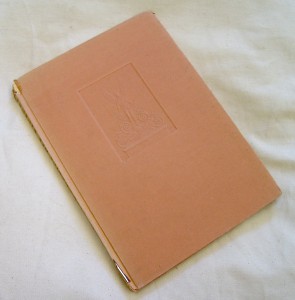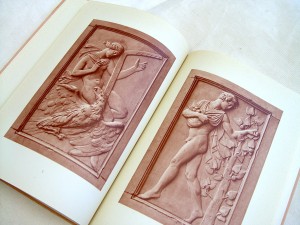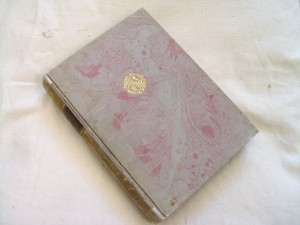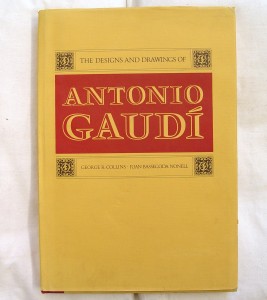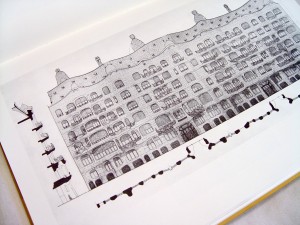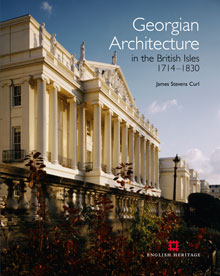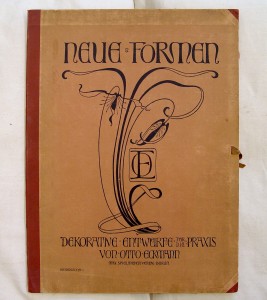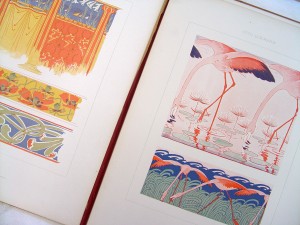Rave, Paul Ortwin. Genius der baukunst, eine klassisch-romantische bilderfolge an der Berliner bauakademie von Karl Friedrich Schinkel. Berlin: Verlag Gebr. Mann, [1939].
The twenty-three, beautifully reproduced, photographic plates in Genius der baukunst, eine klassisch-romantische bilderfolge an der Berliner bauakademie von Karl Friedrich Schinkel were among first things I noticed when I inspected this title. The book, by German art historian and former director of the National Gallery in Berlin Paul Ortwin Rave (1893-1962), is a study of the Baukademie (1832-1836) in Berlin. Designed by the influential German architect, Karl Friedrich Schinkel (1781-1841), the Baukademie is considered a precursor to modernism due to its cubic, economical facade and bold use of red brick. Schinkel’s work was of special interest to Rave, and he devoted himself to researching and publishing a series of books on the architect. The lovely photographic plates are accompanied by Rave’s interpretation of the building’s sculptural motifs. Because the Baukademie was demolished in 1962 after being irreparably damaged during the Second World War, photographic images and drawings, like those found in Genius der baukunst, are all that remains to document this important and influential building.
Library of Congress call number: NA 1088 S3 F39

